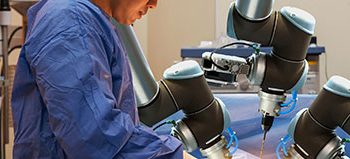
Introduction
Spectroscopy, a powerful analytical technique, enables scientists to study the interactions between matter and electromagnetic radiation. Two widely used forms of spectroscopy are infrared and terahertz spectroscopy. These techniques have gained immense importance in various industries due to their non-destructive and non-invasive nature. In this article, we will explore the world of infrared and terahertz spectroscopy, their applications, advancements, and their impact on the market.
Understanding Infrared & Terahertz Spectroscopy
What is Spectroscopy?
Spectroscopy involves the measurement and interpretation of the interaction between light and matter. By studying the absorption, emission, or scattering of electromagnetic radiation, scientists can identify and characterize substances based on their molecular composition.
Infrared Spectroscopy
Infrared (IR) spectroscopy utilizes infrared radiation to analyze the vibrational and rotational modes of molecules. As molecules absorb infrared light at specific frequencies, this technique provides valuable insights into the functional groups and chemical bonds present in a sample.
Terahertz Spectroscopy
Terahertz (THz) spectroscopy operates in the electromagnetic spectrum between microwaves and infrared radiation. It can detect low-frequency vibrations and collective modes of molecules, making it suitable for analyzing complex molecular structures.
Applications of Infrared & Terahertz Spectroscopy
Pharmaceuticals and Medicine
In the pharmaceutical industry, IR and THz spectroscopy play crucial roles in drug development. They facilitate the analysis of drug formulations, identifying impurities and monitoring chemical reactions, ensuring drug quality and safety.
Environmental Monitoring
IR and THz spectroscopy aid environmentalists in assessing air and water quality. These techniques enable the detection of pollutants and the analysis of atmospheric components, aiding in environmental conservation efforts.
Materials Science
In materials science, IR and THz spectroscopy help analyze the physical and chemical properties of materials. Researchers use these techniques to study crystalline structures, identify unknown compounds, and assess material stability.
Security and Defense
IR and THz spectroscopy have proven invaluable in security and defense applications. They aid in the detection of hazardous substances, explosives, and concealed weapons, enhancing public safety and security measures.
Advancements in Infrared & Terahertz Spectroscopy
Improved Sensitivity and Resolution
Recent advancements have significantly improved the sensitivity and resolution of IR and THz spectroscopy. This allows for the detection and characterization of smaller sample sizes, leading to more precise analyses.
Combination Techniques
Researchers have started combining IR and THz spectroscopy with other analytical methods, such as chromatography and mass spectrometry. This integration enhances the depth of molecular analysis and provides comprehensive data.
THz Imaging
The development of THz imaging has revolutionized various fields. It enables non-invasive imaging of biological tissues, pharmaceutical tablets, and artworks, providing detailed structural information.
Market Overview
Current Market Scenario
The market for infrared and terahertz spectroscopy has experienced substantial growth in recent years. The increasing demand for spectroscopic analysis in pharmaceutical, environmental, and materials research has been a driving force behind this growth.
Growth Drivers
The rising focus on research and development in various industries, along with technological advancements, has propelled the market forward. Additionally, the growing applications of spectroscopy in healthcare and security have further boosted its demand.
Challenges
Despite the promising growth, the infrared and terahertz spectroscopy market faces challenges such as high equipment costs, complex instrumentation, and the need for skilled operators.
Key Players
Prominent companies in the IR and THz spectroscopy market include industry leaders such as Bruker Corporation, Thermo Fisher Scientific, and Shimadzu Corporation.
Infrared & Terahertz Spectroscopy in Different Industries
Healthcare
In the healthcare sector, these spectroscopic techniques contribute to disease diagnosis, drug development, and personalized medicine. They also aid in studying biomolecules and understanding their functions.
Food and Beverage
In the food industry, IR and THz spectroscopy help analyze food quality, composition, and safety. They detect contaminants and ensure that food products meet regulatory standards.
Aerospace and Defense
In aerospace and defense, these techniques play a pivotal role in identifying defects in materials used for aircraft and spacecraft construction. They also help detect chemical and biological threats.
Research and Academia
In research and academia, IR and THz spectroscopy are indispensable tools for studying chemical reactions, materials properties, and the behavior of biomolecules.
Future Prospects
Emerging Technologies
The future of IR and THz spectroscopy looks promising with the development of miniaturized and portable devices. These advancements will expand the applicability of spectroscopy beyond laboratory settings.
Potential Applications
Researchers foresee potential applications of spectroscopy in fields like nanotechnology, quantum computing, and environmental sensing, which could revolutionize various industries.
Conclusion
Infrared and terahertz spectroscopy have emerged as indispensable tools in scientific research and industrial applications. Their non-destructive nature, coupled with advancements in sensitivity and resolution, has opened new avenues for molecular analysis. As technology continues to evolve, these spectroscopic techniques are set to play an even more significant role in shaping the future of various industries.
FAQs
- What is the main difference between infrared and terahertz spectroscopy?
- Infrared spectroscopy primarily focuses on the vibrational and rotational modes of molecules, while terahertz spectroscopy deals with low-frequency vibrations and collective molecular modes.
- How is terahertz spectroscopy used in pharmaceutical research?
- Terahertz spectroscopy aids in the analysis of drug formulations, detecting impurities, and monitoring chemical reactions to ensure drug quality and safety.
- What challenges does the infrared and terahertz spectroscopy market face?
- The market faces challenges such as high equipment costs, complex instrumentation, and the need for skilled operators


